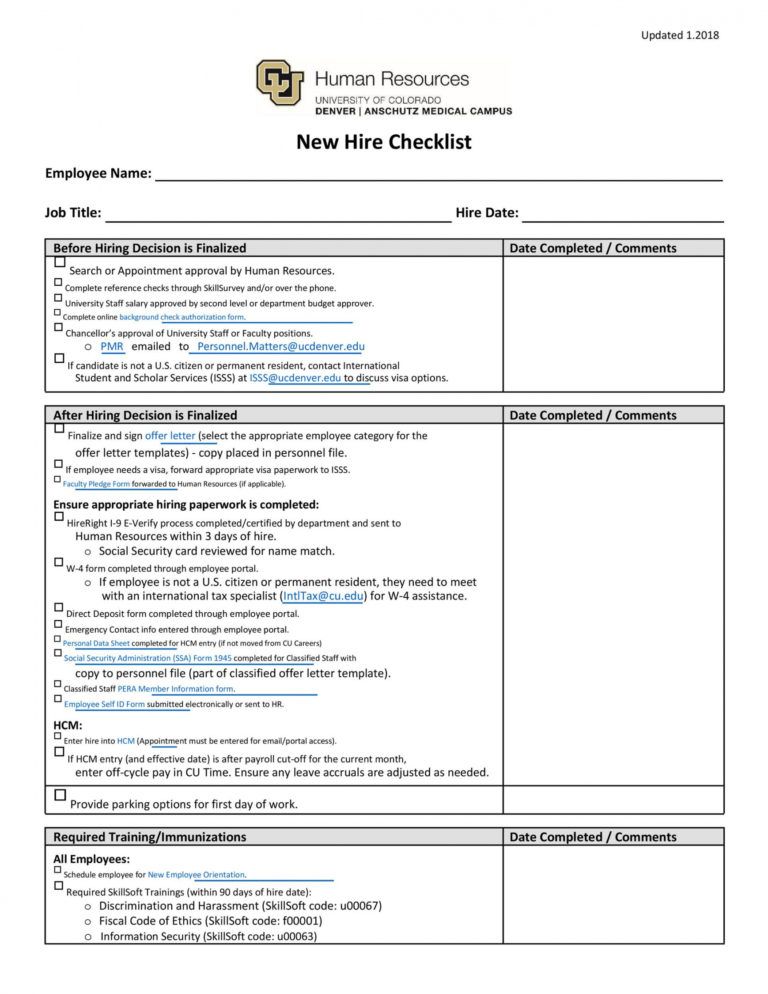Essential Paperwork Guide: Hiring New Employees

Hiring a new employee is a significant milestone for any business, whether it's a startup or a well-established company. It involves more than just interviewing and onboarding—it requires meticulous attention to the paperwork to ensure compliance with various laws and regulations. This guide will provide you with a comprehensive overview of the essential documents needed when hiring new employees, helping you streamline the hiring process and avoid legal complications.
The Essentials of New Hire Paperwork

1. Job Application and Resume

Before diving into the official paperwork, the job application and resume are the first documents candidates provide. These documents:
- Give an initial overview of the candidate’s qualifications and experience.
- Are used to screen applicants for further consideration.
- Should be reviewed for accuracy to prevent any future disputes regarding qualifications or employment history.
2. Job Offer Letter

Once a candidate has passed the interview stages, you’ll need to send them a job offer letter. This letter should include:
- The position being offered.
- Compensation details.
- Start date and work hours.
- Any conditions of employment like background checks or physical exams.
📝 Note: Make sure the job offer letter is clear to prevent any misunderstandings about the terms of employment.
3. I-9 Form (Employment Eligibility Verification)

The U.S. Citizenship and Immigration Services requires employers to complete Form I-9 for each new hire to verify identity and employment authorization. Here’s what you need:
- List A documents (e.g., U.S. Passport) or a combination of List B and List C documents to prove identity and work authorization.
- Employees must fill out Section 1 no later than their first day of work.
4. W-4 Form (Employee’s Withholding Certificate)

This IRS form helps determine the correct amount of federal income tax to withhold from the employee’s paycheck. Key points:
- Must be filled out by the employee.
- Can be updated by the employee at any time if their tax situation changes.
5. State Tax Withholding Forms

Depending on the state where your business operates, you might need to provide state-specific withholding forms. For example:
- California uses Form DE-4.
- New York uses Form IT-2104.
6. Employee Handbook Acknowledgement

Most companies provide an employee handbook detailing company policies, procedures, and the work culture. It’s crucial to:
- Have the employee sign an acknowledgment form stating they have received, read, and understood the handbook.
7. Direct Deposit Authorization

This form authorizes the employer to deposit the employee’s salary directly into their bank account:
- Ensure the form includes bank details, routing number, and account number.
- Can include authorization for ACH payments or electronic transfers.
8. Emergency Contact Form

For safety reasons, an emergency contact form should be completed:
- Details about who to contact in case of an emergency.
- Can include medical information if relevant.
9. Confidentiality and Non-Compete Agreements

Depending on the nature of your business:
- Confidentiality agreements ensure that proprietary information remains within the company.
- Non-compete agreements might prevent employees from joining direct competitors within a certain timeframe after leaving the company.
10. Benefits Enrollment Forms

Many companies offer benefits like health insurance or retirement plans. Forms for these include:
- Enrollment in health, dental, or vision plans.
- 401(k) or other retirement plan participation forms.
11. Performance Expectations and Evaluation Criteria
Outline the job’s key performance indicators:
- This can help set clear expectations and can be referred to during performance reviews.
💡 Note: Setting clear performance expectations not only helps with employee performance but also serves as a legal document in case of disputes or termination.
In sum, hiring new employees involves a series of critical documents that ensure a smooth, compliant, and legally sound hiring process. By meticulously preparing and managing these documents, you create a robust framework for your employee relationship from the very beginning. Ensuring each step is followed meticulously will save your company from potential legal issues, keep your business running efficiently, and foster a transparent, trust-filled working environment. The hiring process, while detailed, sets the foundation for long-term employment success and satisfaction for both the employee and the employer.
Why is it important to complete Form I-9 for new employees?
+Form I-9 is required by law to verify the identity and employment authorization of new hires in the United States, helping to prevent unauthorized employment and combat identity theft.
What should be done if an employee does not have all the necessary documentation at the time of hiring?
+The employee has three business days from the date of hire to provide the necessary documents. If they do not provide them within this timeframe, you may need to terminate their employment or request an extension from the Department of Homeland Security.
Can non-compete agreements be enforced?
+The enforceability of non-compete agreements varies by state. Some states have strict regulations or even bans on non-competes, while others might uphold them if they are reasonable in scope, duration, and geographic area.



